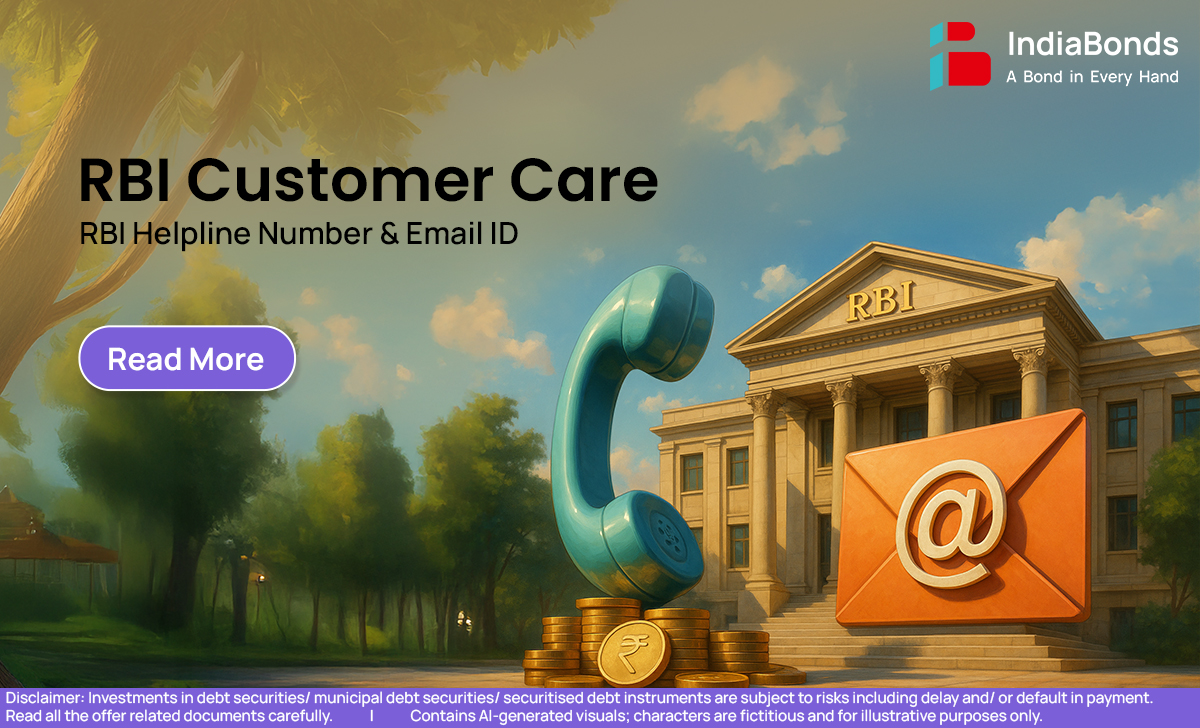RBI Customer Care: RBI Helpline Number & Email ID

Imagine this: you’ve raised a complaint with your bank, waited for days, maybe even weeks, and still nothing has moved. At that point, the question naturally comes — “Where do I go next? Who do I call?”
That’s where the Reserve Bank of India (RBI) steps in. RBI has set up a clear system to ensure that every consumer has a place to turn when their issue is not resolved by a bank, NBFC, or any regulated financial institution. Whether you prefer to make a call, send an email, or go online, RBI customer care offers multiple ways to reach them. Knowing these details can save a lot of stress when you need quick answers for your RBI complaint.
How to Reach RBI Customer Care?
There isn’t just one way to connect with RBI customer care — and that’s a good thing. Some people are more comfortable picking up the phone, while others like to write everything down and keep a paper trail.
The most convenient option today is the Complaint Management System (CMS) portal. It allows you to log an RBI complaint online and then track it from start to finish. But if online systems feel overwhelming, RBI also runs a dedicated contact centre with a simple helpline number. On top of that, you can still reach them through email or even by sending a letter to their Centralised Receipt and Processing Centre in Chandigarh.
In short, no matter your comfort level with technology, RBI has kept an option open for you — and that’s what makes this system approachable.
RBI Helpline Number
For anyone who wants to speak to a person (or at least hear a voice on the other end), RBI has set up the RBI helpline number: 14448. This is the go-to number for guidance on how to raise an RBI complaint, what documents are needed, and how to check the status later.
RBI Toll-Free Number
The good news? This helpline is toll-free. By dialling 14448, you can connect to RBI’s Interactive Voice Response System any time of the day. And if you prefer human assistance, agents are available during working hours to walk you through the process. Having this kind of access makes sure that help doesn’t feel far away, whether you’re sitting in a big city or a smaller town.
RBI Customer Care Email ID
For those who prefer everything in writing, RBI accepts complaints through email as well. The official address is crpc@rbi.org.in. You can send your RBI complaint here along with supporting documents. Many customers actually find this more convenient because they get a clear written record, and it feels more formal compared to a phone call.
RBI Governor Contact Number
Now, here’s a common confusion: people often search for the RBI governor contact number, thinking that the Governor’s office will personally step in. In reality, the Governor’s office is not meant for customer grievances. The official contact is only for protocol or special correspondence. For everyday banking complaints, the CMS portal, the helpline number, or the CRPC email are the right channels to use.
RBI Governor Email ID
Yes, there is an RBI governor email id — governor@rbi.org.in. But again, this is not for routine complaints. It exists for formal communication, not for sending consumer grievances. If your goal is to get your problem with a bank or NBFC addressed, you’ll get faster results by using the CMS system or reaching out to the official customer care email.
FAQ
What is the toll-free number of RBI?
It’s 14448. You can call this number to get information about filing an RBI complaint and to connect with RBI customer care.
How can I talk with the RBI governor?
The Governor doesn’t directly interact with customers about grievances. Instead, use the helpline, email, or CMS portal. These are the correct ways to raise your issue.
What is the complaint number of the RBI governor?
There isn’t one. The Governor’s office is not a complaint desk. The official RBI helpline number 14448 is what customers should use.
How to submit a complaint to RBI?
Step one: always reach out to your bank or NBFC first. If they don’t resolve it within the given time, then step two is filing an RBI complaint — either through the CMS portal, by emailing crpc@rbi.org.in, or by calling 14448 for guidance.
Final Word
In financial matters, delays can be frustrating. But knowing exactly how to connect with RBI customer care puts you in control. Whether it’s the CMS portal, the toll-free helpline, or the email option, the RBI has made sure that customers are not left without a voice. So the next time your bank drags its feet, you’ll know exactly where to turn.
Disclaimer : Investments in debt securities/ municipal debt securities/ securitised debt instruments are subject to risks including delay and/ or default in payment. Read all the offer related documents carefully.
































